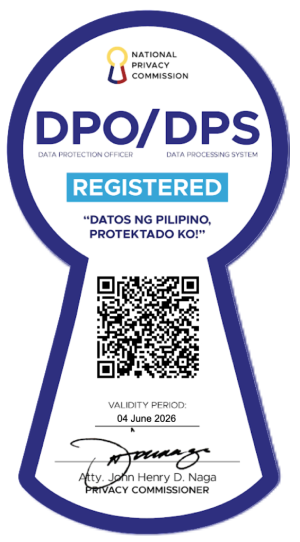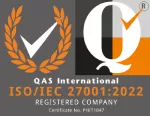
Cold calling is far from dead. In today’s crowded B2B landscape, it remains one of the most direct ways to spark conversations with decision-makers. But as more companies compete for the same sliver of attention, the pressure to make every call count has never been higher. That’s why many sales leaders—and their outsourced partners—are turning to pareto cold calling to streamline efforts and drive better outcomes. By focusing on the inputs that produce the biggest results, businesses can transform cold calling from a numbers game into a strategic advantage.
Cold calling, at its core, is the practice of initiating unsolicited conversations with potential customers, typically over the phone, to generate interest and move prospects through the sales funnel. Despite evolving buyer behavior and the rise of digital channels, cold calling still works—especially when it’s targeted, relevant, and executed with discipline. In a world of over-automation, real-time human engagement remains a powerful lever.
The 80/20 rule, also known as the Pareto Principle, gives companies a simple but powerful framework: 80% of outcomes often come from 20% of efforts. In cold calling, this insight can radically improve how teams spend their time, structure their outreach, and measure success. This blog explores how decision-makers and BPO partners can apply this principle to outbound campaigns to generate higher returns with fewer wasted calls.
The Power Behind the Principle: Understanding the 80/20 Rule

The 80/20 rule—also known as the Pareto Principle—isn’t just a clever observation; it’s a powerful way to interpret how effort translates into results across business functions. Whether you’re looking at revenue generation, productivity, or customer engagement, the same pattern tends to emerge: a small share of actions or inputs often accounts for the bulk of the outcomes. When applied with intention, this concept allows sales leaders to prioritize what truly moves the needle. In the realm of outbound outreach, pareto cold calling is the process of honing in on the specific call patterns, contact segments, and messaging that deliver the strongest returns.
The origin of this rule traces back to economist Vilfredo Pareto, who observed that a minority of the population owned the majority of wealth. Over time, business leaders noticed similar dynamics in their operations—for example, that a small percentage of customers often accounts for a large percentage of revenue. In cold calling, the message is clear: don’t aim everywhere. Focus on the high-performing few. Pareto cold calling puts this into practice by guiding teams to channel their energy toward the leads and strategies that consistently yield the greatest impact.
Within the cold calling environment, this could mean focusing on a narrow group of high-potential leads, optimizing calling hours based on historical performance, or even training just the top-performing 20% of agents to lead high-stakes outreach. When pareto cold calling is used as a strategic lens, sales teams can significantly improve efficiency and resource allocation.
The possibilities are endless, and the efficiencies gained can be exponential—especially when pareto cold calling becomes embedded into the team’s day-to-day decision-making.
Quality Over Quantity: Where the 80/20 Rule Hits Home in Cold Calling
Cold calling is often misunderstood as a brute-force approach. But the reality is that a handful of well-placed calls can outperform hundreds of poorly targeted ones. That’s where the 80/20 cold calling strategy shines—it helps sales teams cut through the noise and zero in on the interactions that actually move the needle.
In practical terms, this might mean identifying the 20% of your call list that’s most likely to convert, whether because of industry alignment, job role, or recent activity. It might also mean auditing your scripts to find the small tweaks—phrases, questions, rebuttals—that consistently lead to longer conversations or booked meetings. Over time, these patterns become assets that can be systematized across outsourced sales teams.
Instead of evaluating success based on dials made, teams start measuring impact: which calls led to meaningful outcomes, and which didn’t? With this data-driven mindset, businesses can shift from reactive dialing to proactive sales development—faster, smarter, and more customer-centered.
Applying the 80/20 Rule in Outsourced Cold Calling Operations
For companies partnering with BPO providers, pareto cold calling becomes even more powerful. Outsourced sales development teams offer scalability—but scale without focus is risky. When both the client and BPO provider align on the top 20% of opportunities, the outcomes are sharper, faster, and more profitable.
A major advantage of working with outsourced partners is access to performance analytics. Top-tier BPO firms continually analyze agent productivity, call-to-conversion rates, and campaign results. By identifying the 20% of agents consistently closing deals or generating qualified leads, managers can replicate success at scale. The goal is not just to generate volume—but to generate volume that converts.
This is where the 80/20 rule becomes a performance filter. Rather than treating all activities as equal, outsourced teams focus their best energy—training, optimization, QA—on the strategies, accounts, and people that deliver. It’s not just operational efficiency. It’s strategic alignment between business priorities and sales execution.
Knowing What to Skip: The Flip Side of 80/20
A core benefit of the 80/20 cold calling strategy is what it gives permission to ignore. In many outbound campaigns, 80% of leads may never engage meaningfully. Chasing these contacts is not only inefficient—it drains morale and resources. The Pareto Principle flips this logic: if it’s not working, stop doing it.
That might sound simple, but in reality, it requires data and decisiveness. Companies and BPOs must be willing to cut underperforming scripts, narrow focus to proven buyer profiles, and say no to vanity metrics. If a segment consistently fails to convert, it’s time to drop it. If a call time yields no traction, reschedule it. Pareto cold calling teaches teams to be ruthlessly practical.
This mindset shift empowers sales teams to act with intention. Cold calling no longer becomes a desperate numbers game—it becomes a strategic exercise in opportunity selection. The more you eliminate dead weight, the more space you make for high-impact calls that actually drive revenue.
Embedding the Rule in Training and Team Development
Sustainable success with cold calling—especially through outsourced teams—hinges on how well the 80/20 rule is taught and reinforced. It’s not enough to know the rule; teams must know how to apply it. That starts with training programs that emphasize discernment, not just volume.
At SuperStaff, for example, our training modules focus on pattern recognition. Agents learn to identify signals of high-value prospects, spot red flags early, and adapt scripts based on feedback loops. By embedding the 80/20 cold calling strategy into coaching, we build teams that work smarter—not just harder.
Celebrating top performers also plays a key role. When sales reps see the impact of doing more with less—whether that’s fewer dials, smarter talk tracks, or targeted follow-ups—they’re more likely to embrace the principle themselves. Over time, the entire sales culture becomes oriented around impact and efficiency.
The BPO Advantage: Scaling Smarter With the 80/20 Rule
The right BPO partner doesn’t just execute calls—they bring a methodology. And pareto cold calling is one of the most reliable frameworks in that toolkit. Especially for companies aiming to scale outbound efforts without ballooning budgets, the 80/20 rule offers a lean, focused path to results.
Whether it’s targeting the 20% of accounts most likely to close, analyzing campaign metrics for outsized contributors, or designing call scripts based on top-performing phrases, the application of this rule is wide-reaching. BPO partners like SuperStaff can operationalize this insight through KPI alignment, feedback loops, and data-driven performance reviews.
The true power of outsourcing lies in flexibility and expertise. But those advantages only pay off when guided by principles that prioritize results. Pareto cold calling isn’t just a tactic—it’s a mindset shift that helps both in-house and offshore teams build sustainable outbound pipelines.
Conclusion: Why Pareto Cold Calling Unlocks Better Results
At its core, pareto cold calling reframes outreach from a numbers game into a strategy game. By focusing on the 20% of inputs—leads, scripts, behaviors—that generate 80% of outcomes, companies can unlock more efficient and impactful sales operations. This approach not only improves conversion rates but also reduces burnout and unnecessary churn.
Throughout this blog, we’ve explored how the 80/20 rule applies to lead prioritization, sales script refinement, agent performance, and outsourced campaign design. From avoiding unproductive tasks to empowering top performers, this principle reshapes how businesses approach outbound sales. More than just a concept, it’s a practical framework that delivers clarity and results.
Ready to apply the 80/20 rule to your sales strategy? SuperStaff’s experienced cold calling teams are trained to find and amplify your best opportunities—focusing on what works and eliminating what doesn’t. Partner with us to scale your outbound sales smarter, faster, and more efficiently.






